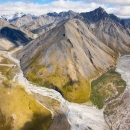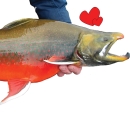Research
When woolly mammoths still roamed Earth, rain and snow fell on the south side of Alaska’s Brooks Range. Those same ancient waters are just now entering frozen rivers on Alaska’s North Slope via perennial springs. And they hold the key to survival for salmon-sized Dolly Varden and several other species of fish in Arctic National Wildlife Refuge.
Read more about Alaska's North Slope Dolly Varden and what we know:




